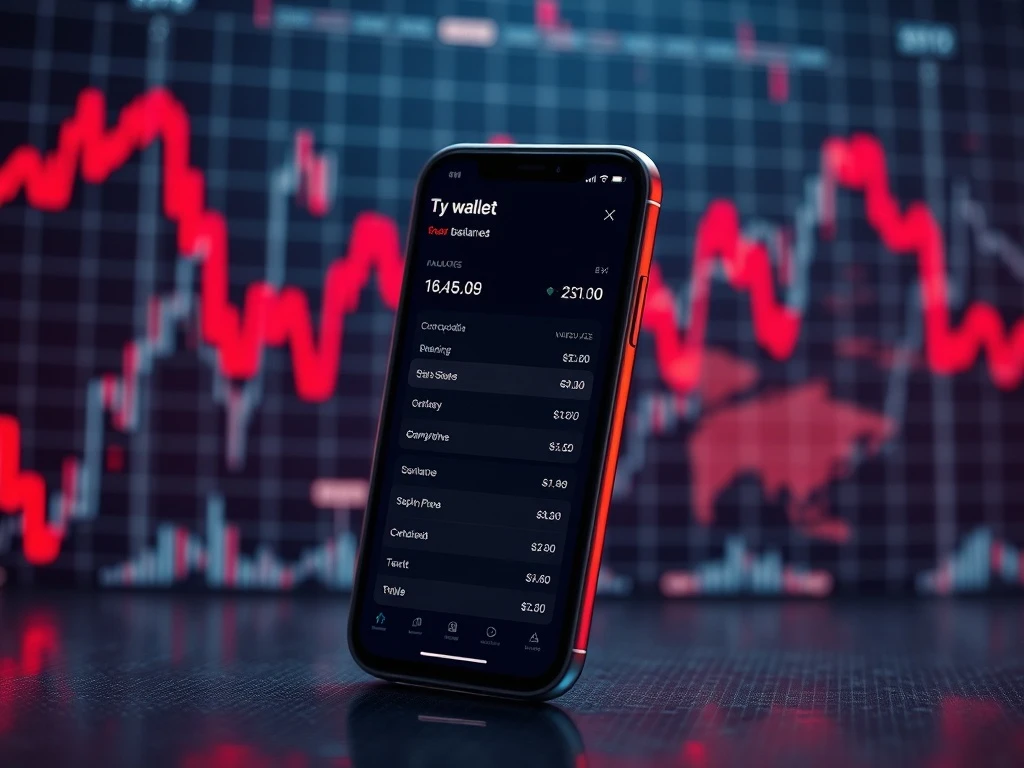Binance Wallet: Critical Display Issues Persist After Crypto Crash

The recent **crypto crash** sent significant ripples across the digital asset landscape. Many users rely on digital wallets for managing their cryptocurrency holdings. Consequently, users of both **Binance Wallet** and **Trust Wallet** recently encountered significant **wallet display issues**, sparking widespread concern about their assets. This report delves into the causes and impacts of these lingering problems, offering crucial insights for crypto enthusiasts.
Binance Wallet Grapples with Lagging Data After Crypto Crash
Following last Friday’s substantial market downturn, **Binance Wallet** users faced frustrating balance display problems across some of its services. As of Monday, the self-custody product continued to show these anomalies. Binance Wallet took to X, formerly Twitter, to report that the wallet was “temporarily experiencing lag.” This lag stemmed from network congestion, which prevented some users from viewing essential wallet data. “This information requires some buffering time to display. We are actively working on resolving this issue,” the post explained.
Binance further attributed similar display issues to pricing abnormalities. These abnormalities affected several altcoins on its trading platform in the wake of the market crash. Significantly, the problems extended beyond mere visual glitches for some users.
Users Report Inability to Sell During Volatility
While Binance Wallet’s official post did not explicitly mention transaction impacts, many users claimed the display issues prevented them from interacting with their assets. For instance, one commentator expressed frustration: “I’ve incurred a loss of over $130 due to a 3.5% drop in BNB, and I couldn’t sell because of issues with your platform. Who is responsible for this?”
Furthermore, questions arose regarding the liquidity of **BNB token** (BNB), the native crypto asset of Binance-operated BNB Chain. During this period, the token printed a new all-time high at $1,370 on Monday, according to data from Coinbase. This unusual price action amidst widespread display issues heightened user anxiety.
Trust Wallet’s Similar Struggle and Swift Resolution
The balance display problems affecting **Binance Wallet** soon followed similar issues reported by **Trust Wallet**. Trust Wallet, a self-custody wallet owned by Binance co-founder Changpeng “CZ” Zhao and formerly operated by Binance, experienced its own set of challenges on Sunday.
“We’re aware that some users are unable to see their balances in Trust Wallet due to a market data sync issue,” the platform wrote on X. Fortunately, Trust Wallet later confirmed the issue was resolved within approximately four hours. However, some users continued to experience the problem even after Trust Wallet’s announcement, reporting that wallet balances still displayed incorrect information.
Dami Odufuwa, Trust Wallet’s head of communications, confirmed the resolution to Crypto News Insights as of Monday at 1:30 pm UTC. Odufuwa clarified that users could still swap, stake, and transfer their crypto assets as usual, despite the temporary display problems. She added:
- The issue only affected the visibility of fiat balances.
- This was due to a temporary market data sync error.
- All assets remained safe.
- Users’ on-chain and self-custody experiences were fully unaffected.
The executive also highlighted Trust Wallet’s substantial user base, which includes at least 17 million monthly active users and 210 million app installs historically.
Understanding the Root Cause: Crypto Crash and Oracle Stress
Lucien Bourdon, a Bitcoin analyst at hardware wallet maker Trezor, offered valuable insights into the underlying causes of these widespread **wallet display issues**. He suggested that the incorrect balance displays on both **Binance Wallet** and **Trust Wallet** likely stemmed from record liquidations. These liquidations, in turn, placed pricing and oracle servers under immense stress. This stress can cause delays and inaccuracies in data feeds, leading to the display problems users observed.
Bourdon emphasized that users can always verify their balances via a blockchain explorer during periods of network congestion. This advice echoed similar guidance shared by CZ on Sunday. “If a wallet UI [user interface] looks wrong, you can check the balances on a block explorer,” Bourdon told Crypto News Insights. He concluded, “The takeaway is UI or infra fragility under stress, rather than a self-custody risk.” This distinction is crucial for understanding the nature of the problem.
Navigating Wallet Challenges and Ensuring Asset Security
The display issues experienced by **Binance Wallet** and **Trust Wallet** appeared exclusive to these two platforms at the time of publication. No other prominent wallets reported similar UI problems. This situation underscores the critical importance of understanding how digital wallets function, especially during periods of extreme market volatility and network congestion.
For users holding the **BNB token** or any other cryptocurrency, remaining vigilant is paramount. Always cross-reference your wallet’s displayed balance with a reliable **blockchain explorer**. This practice helps confirm the true ownership and value of your assets. While these incidents highlight infrastructure fragility, they also reinforce the fundamental security of self-custody. Your assets remain safe on the blockchain, even if the user interface temporarily struggles to reflect them accurately. Staying informed and verifying information through multiple channels remains crucial for every crypto participant.









